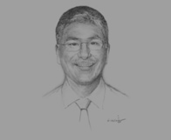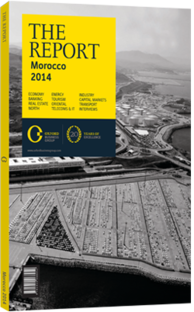OBG talks to El Houssaine Louardi, Minister of Health

Interview: El Houssaine Louardi
What effect will Law No. 10.94 have on the modernisation of Morocco’s medical industry?
EL HOUSSAINE LOUARDI: The law aims to widen access to capital for non-doctors at private hospitals, in a context where the cost of equipment has become more expensive and new sources of investment are required to meet the needs of health care facilities. This system, adopted by 68% of countries, has proven its efficiency as a catalyst for growth for their health care sectors. By fostering the construction of an array of new clinics, some of them oriented towards medical tourism or specialised in niches like senior foreign clientele, the Moroccan health care offerings will be enlarged and better distributed throughout the country – notably in the southern provinces, which suffer from a serious lack of health care infrastructure. A more competitive environment will also encourage private operators to drop their prices, improve service quality and showcase best practices, leading to new jobs for doctors and nurses.
What strategy should be implemented to improve health insurance coverage?
LOUARDI: Before 2005, the health insurance sector was essentially private and covered 16% of the population. Current mandatory insurance covers 34%, with the National Social Security Fund managing the private sector and the National Fund for Social Protection managing the public sector. In March 2012, the Medical Assistance Regime (Régime d’Assistance Médicale – RAMED) was initiated, of which the state is paying 75% and the rest is paid by local authorities and patients. Today, 7m Moroccans are registered under RAMED and the programme should eventually cover 8.5m, or 28% of the population. Another draft law aims to complete the scheme by providing insurance to independent workers. To overcome Morocco’s health challenges, we must have mandatory, universal coverage that people can access care without having to pay up front.
How can Morocco overcome its shortage of human resources in remote areas?
LOUARDI: Every health care system needs both quality and quantity in its workforce. Morocco currently suffers from a shortage of 7000 doctors and 10,000 nurses, and the World Health Organisation (WHO) ranks it among the 54 countries with the most serious deficit in this area. We have therefore implemented strategies such as the regionalisation of recruitment processes to ensure a better and steadier distribution of the workforce, notably in remote areas. A bill presently being processed through the parliament to develop a public-private partnership framework that allows private physicians and specialists to work occasionally in public facilities so as to ensure the continuity of care. Last, we are creating a system of incentives that will encourage physicians to settle in remote areas.
What measured might be taken to increase competitiveness in the pharmaceutical sector?
LOUARDI: In 2013, a contract was signed in Tangiers to develop medicine production in Morocco, consolidate the sector’s export capacity and find new inroads into promising markets. The sector is currently composed of about 40 laboratories that employ 42,000 people and supply 70% of domestic consumption. Since it is classified by the WHO as in the “Europe zone”, it enjoys international recognition for quality and is able to export more than 10% of production to Europe, Asia and the Middle East.
We are currently reviewing the tax system and the proposed value-added tax scheme in order to ensure that the sector is able to grow on an international scale, and we are keen to back initiatives in Africa. Though growth in Morocco’s pharmaceutical sector was subdued (around 2%) in 2013 after a mandated price reduction for some 1600 medicines hurt its prospects, we reckon that the sector has great potential for growth in the next few years.
You have reached the limit of premium articles you can view for free.
Choose from the options below to purchase print or digital editions of our Reports. You can also purchase a website subscription giving you unlimited access to all of our Reports online for 12 months.
If you have already purchased this Report or have a website subscription, please login to continue.

